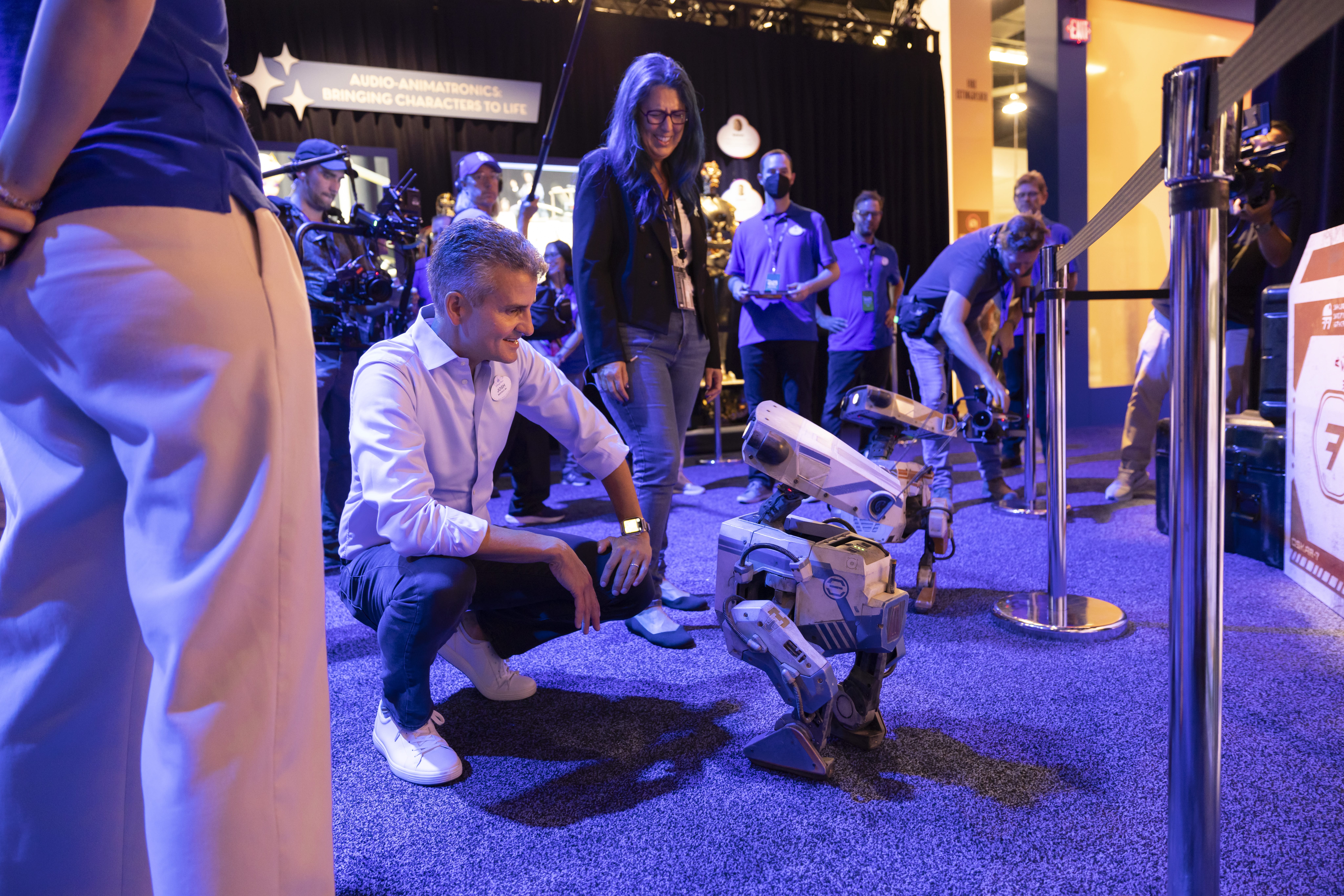After debuting at Star Wars: Galaxy’s Edge in Disneyland back in 2023, the BDX droids are on their way to Florida, Tokyo, and Paris. But how is Disney getting the droids ready for their new homes?
Moritz Bächer, Associate Lab Director of Disney’s Zurich robotics team, answered that question and more in an interview with TechRadar.
“The BDX Droids took less than a year to go from concept to fully themed droids that we play-tested at the park,” Bächer said. But they’re still updating and changing elements as they go.
To get the droids ready for Florida, the team switched their 3D printed parts with milled ones that can better withstand the heat. New content has also been added to the droids in conjunction with Disney Live Entertainment.
We only build technology in the interest of storytelling.
Moritz Bächer
The original droids were developed by an eight-member team that “worked on the mechanical design, the artistic input [from a full-time animator], and the reinforcement learning.”
With reinforcement learning, the team places digital models in different environments to see how they react and learn.
“We basically take animation as an input and make sure that our robots know how to best follow these inputs,” Bächer explained. “They learn to not only walk, but to follow the artistic provided motion that differentiates us from the rest of the world.”
The team has expanded in the years since as they prepare the droids for new destinations. TechRadar asked about how the droids fare on the rocking motion of the Disney Wish, where they began appearances earlier this year.
Bächer explained that with balancing, “no matter what the operator does, these robots learn to balance.”
“We not only simulate flat terrain and uneven terrain,” he added, “but we also push these robots in the simulation with random forces in all directions that are applied to the pelvis into the two feet.”
Each droid has four actuators in its head and neck, and five in each leg. They have sensors, LEDs, cameras, and two Nvidia Jetson computers.
“We’re thrilled to join forces with Google DeepMind and Nvidia to build a simulation framework that speaks to many applications,” said Bächer, “including what we care about most — bringing new or next-generation robotic characters to life.”
The simulation is dubbed the Newton Platform and, unlike other robots, it is unrelated to autonomy. Disney decided that pure A.I. was not enough to get the droids to deliver the correct performance.
“On the autonomy side, our solutions have to look very different from what the rest of the industry is looking for,” Bächer explained. “With all that we do, our creative vision and artists are at the center of things and are in control.”
Bächer hopes to instead use autonomy to support an operator. “So think of a two joystick controller that we actually use to operate our BDX Droids at the moment. If you have more complex characters, then you also need to control the arms at the same time, so at some point in time, joysticks are not going to be good enough.”
There is already some autonomy built into the BDX droids, allowing them to randomly move their antennas and blink their eyes.
“So completely autonomous solutions are not what we’re necessarily after,” Bächer said, “rather ones that augment what we can do as a mini creative director or operator in our parks.”
Bächer noted how far robotics and animatronics have come in terms of hiding tech from both guests and creatives.
“What we’re actually excited about is that you don’t see the technology any longer,” Bächer said. “The ultimate goal is that we can hide the complexity of these systems from our creatives and artists, so that they can actually focus on the artistic or creative aspects of designing a character or a show, and so on.”
You don’t build technology for the sake of technology or build functional robots that do tasks, we build Disney technology to create next-generation characters there immersing you in a world so that you don’t see the mechanical systems any longer, you see just a believable robotic character.
Moritz Bächer
The interview also revealed an exciting detail for fans: the official names of the four BDX droids. While they have in the past been referred to by color, they’re now known as Besh, Grek, Oskar, and Red.
The BDX droids debuted in October 2023 with a playtest in Star Wars: Galaxy’s Edge at Disneyland. In 2024, they made daily appearances for a limited-time as part of Season of the Force. They will appear at Tokyo Disneyland, Disneyland Paris, and Walt Disney World “later this year.” The droids will also be in “The Mandalorian & Grogu,” in theaters on May 22, 2026. They earned the 2025 Thea Award for Outstanding Achievement – Technical Innovation.
Watch our video of the 2023 BDX droids playtest below.
For the latest Disney Parks news and info, follow WDW News Today on Twitter, Facebook, and Instagram.



